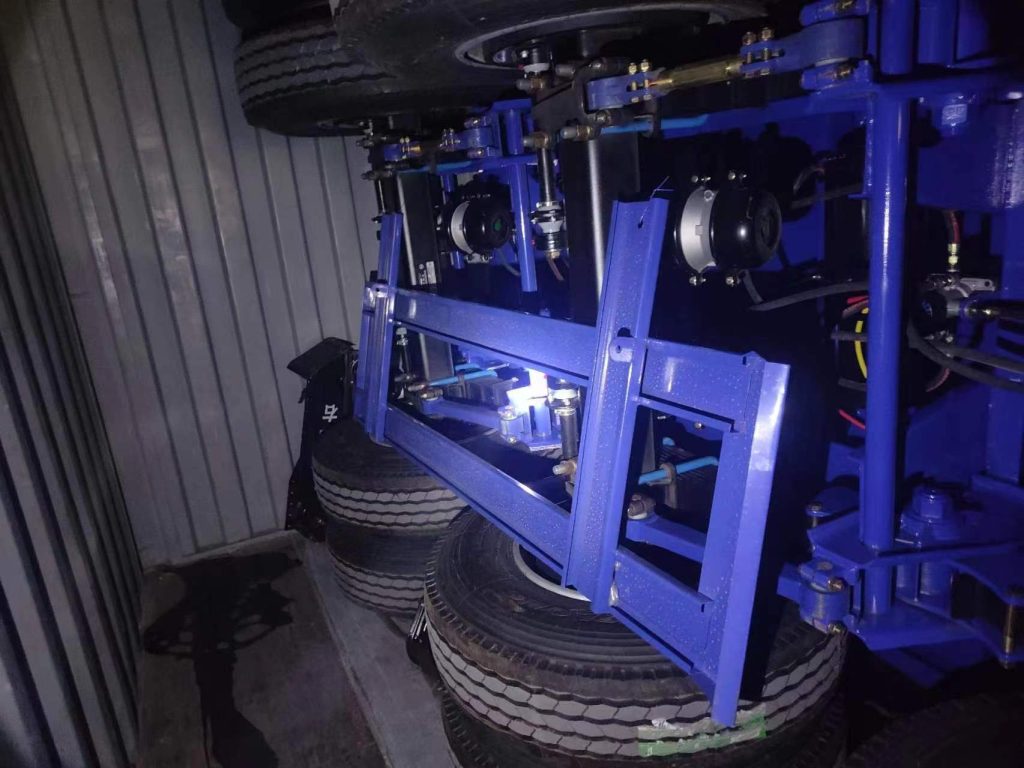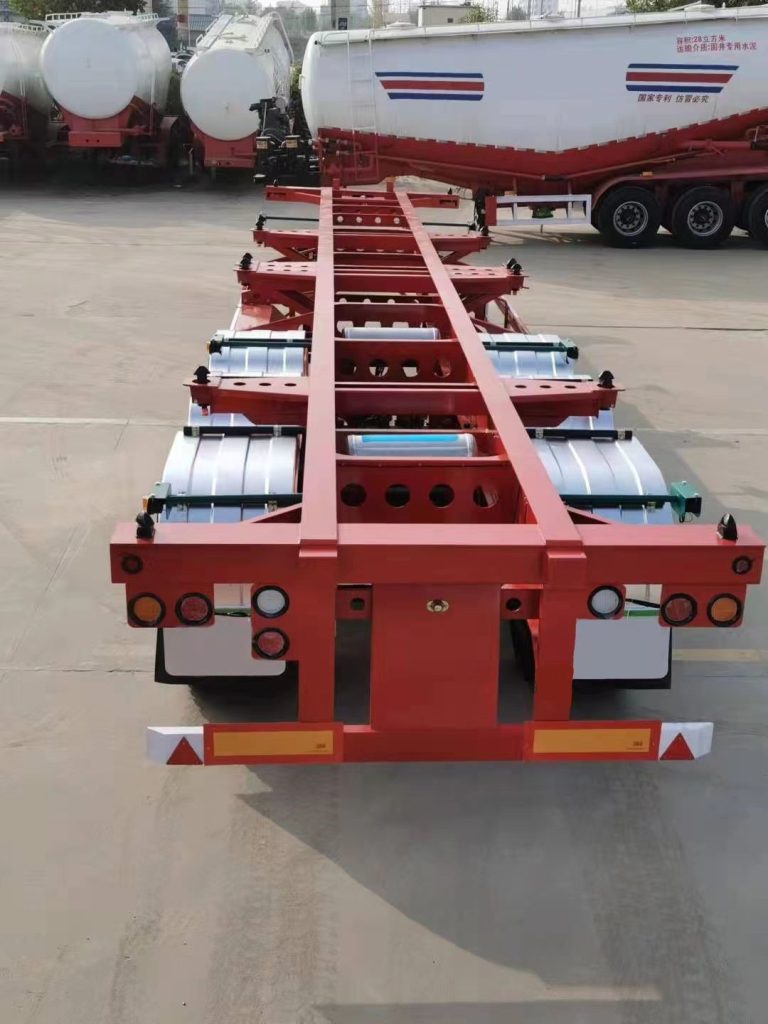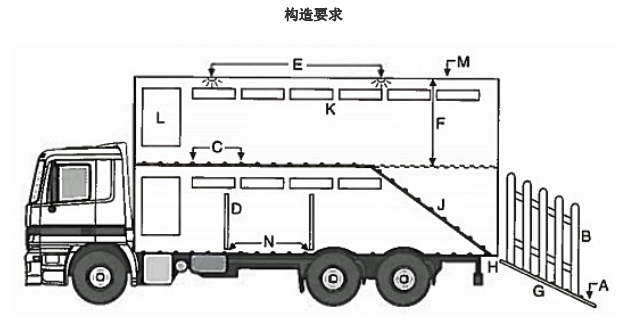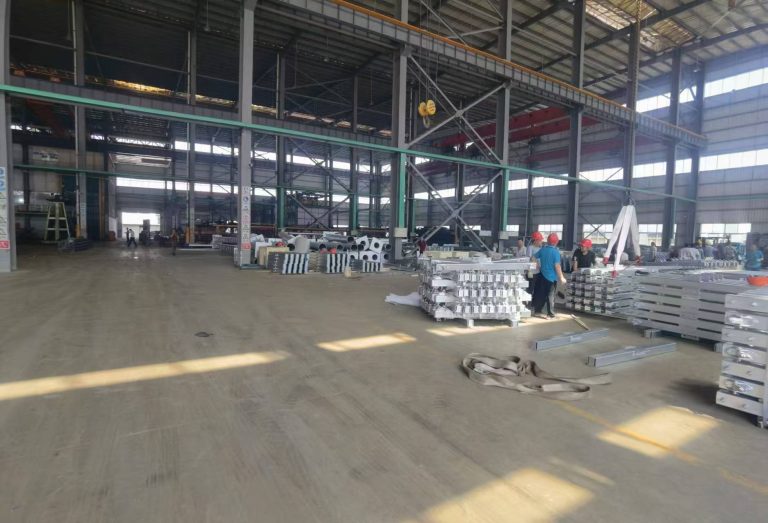Container Semi-trailers are a common means of transportation in logistics transportation. How to reasonably control the fuel consumption of container semi-trailers is a major problem for freight companies. So, what is the fuel consumption of container semi-trailers?
The fuel consumption of container semi-trailers varies depending on many factors, including vehicle model, load, driving habits, road conditions, etc. Generally speaking, the fuel consumption of most semi-trailers is about 35 liters per 100 kilometers, but the specific fuel consumption needs to be evaluated according to specific circumstances.
There are many factors affecting the fuel consumption of container semi-trailers. The following are some of the main factors:
(1) Vehicle design and weight: The design and weight of the vehicle will directly affect the fuel consumption. Lighter and more streamlined vehicle designs usually have lower fuel consumption. At the same time, the vehicle’s load is also a key factor affecting fuel consumption. The larger the load, the higher the fuel consumption.
(2) Engine technology and efficiency: The engine is one of the decisive factors in vehicle fuel consumption. Better engine technology, such as higher compression ratio, optimized combustion process and low friction design, can improve fuel efficiency.
(3) Tires: The type, size, pressure and degree of wear of tires all affect fuel consumption. Proper tire pressure and less worn tires can reduce resistance and thus reduce fuel consumption.
(4) Driving habits: The driver’s driving habits have a great impact on fuel consumption. Sudden acceleration, sudden braking and unnecessary idling can increase fuel consumption. A steady and smooth driving style can help reduce fuel consumption.
(5) Road conditions: The road conditions you drive on have a significant impact on fuel consumption. Mountain roads, slopes, congested urban roads and uneven roads can increase fuel consumption. In contrast, highways and smooth country roads usually have lower fuel consumption.
(6) External environment: External environmental factors such as temperature, wind speed and wind direction can also affect fuel consumption. For example, in cold weather, the engine needs more fuel to keep warm.
(7) Maintenance and care: The maintenance and care of the vehicle can also affect fuel consumption. For example, regularly changing the engine oil, air filter and fuel filter, and keeping the engine in good running condition can reduce fuel consumption.
(8) Vehicle load: The load of a container semi-trailer directly affects fuel consumption. Full load and overload will increase fuel consumption, while light load may reduce fuel consumption.
(9) Fuel quality: Fuel quality also affects fuel consumption. Using high-quality fuel can improve combustion efficiency and reduce fuel consumption.

In order to reduce fuel consumption, drivers can pay attention to the following points:
(1) Driving style: Develop good driving habits and avoid unnecessary operations such as sudden acceleration and sudden braking to reduce fuel consumption.
(2) Vehicle weight: Reduce vehicle weight and reduce fuel consumption by optimizing loading and reducing unnecessary accessories.
(3) Tire model: Choose a smaller tire model, because the larger the tire model, the more fuel it consumes.
(4) Drag coefficient: Reduce the height of the vehicle and reduce wind resistance to reduce fuel consumption.
(5) Tire pressure: Keep the tire pressure within the standard range to ensure stable driving and reduce fuel consumption.
(6) Speed: On the highway, driving at a constant speed of about 80 km/h can improve fuel economy.
In summary, the fuel consumption of container semi-trailers is related to multiple factors. During the transportation process, freight companies should improve management in all aspects according to actual needs, choose reliable models, maintain vehicles well, and plan routes scientifically and reasonably. This can effectively reduce the fuel consumption of container semi-trailers and improve the company’s transportation efficiency.






